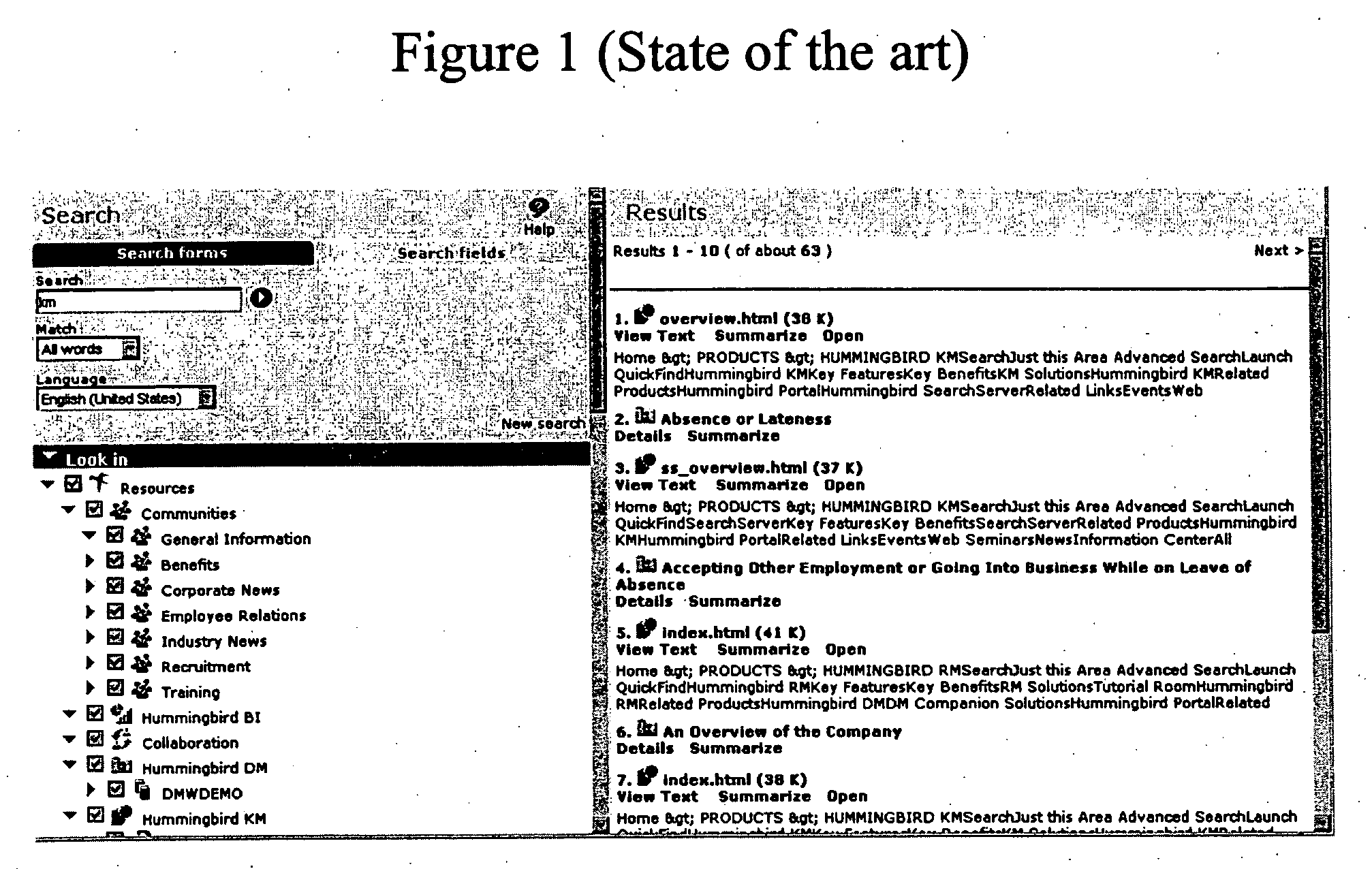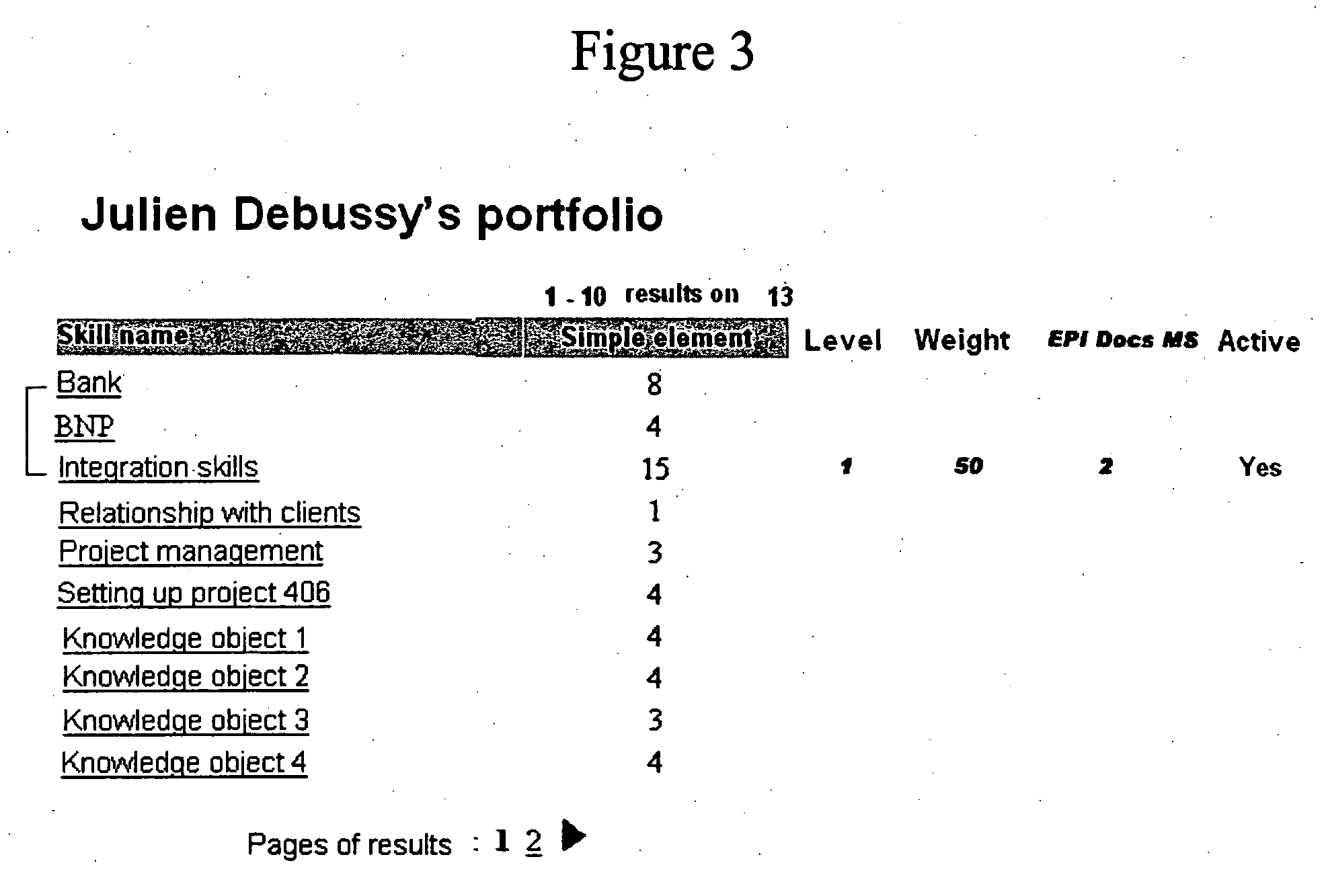Data processing method based on simple element dynamic structures
- Summary
- Abstract
- Description
- Claims
- Application Information
AI Technical Summary
Benefits of technology
Problems solved by technology
Method used
Image
Examples
Embodiment Construction
[0061] In the present exemplary embodiment, the invention is applied in a computer environment used for managing skills and knowledge in a company. The present invention is preferably used from a computer environment equipped with an Internet browser such as Internet Explorer (trademark of Microsoft Corp.). The invention may also be applied in the Web client mode and the Web service mode.
[0062] A Web client system is a resource which may access the Web by means of a network interface which sends requests and receives answers to these requests. A Web service is a resource accessible on the Web by means of a network interface which accepts requests and sends back answers to these requests. This resource is formally described by a software interface contained in a service description document. The technology of Web services is recent and the state of the art is for example described in WO 00 68828 A.
[0063] It will be recalled here that the principle of present information p...
PUM
 Login to View More
Login to View More Abstract
Description
Claims
Application Information
 Login to View More
Login to View More - R&D
- Intellectual Property
- Life Sciences
- Materials
- Tech Scout
- Unparalleled Data Quality
- Higher Quality Content
- 60% Fewer Hallucinations
Browse by: Latest US Patents, China's latest patents, Technical Efficacy Thesaurus, Application Domain, Technology Topic, Popular Technical Reports.
© 2025 PatSnap. All rights reserved.Legal|Privacy policy|Modern Slavery Act Transparency Statement|Sitemap|About US| Contact US: help@patsnap.com



